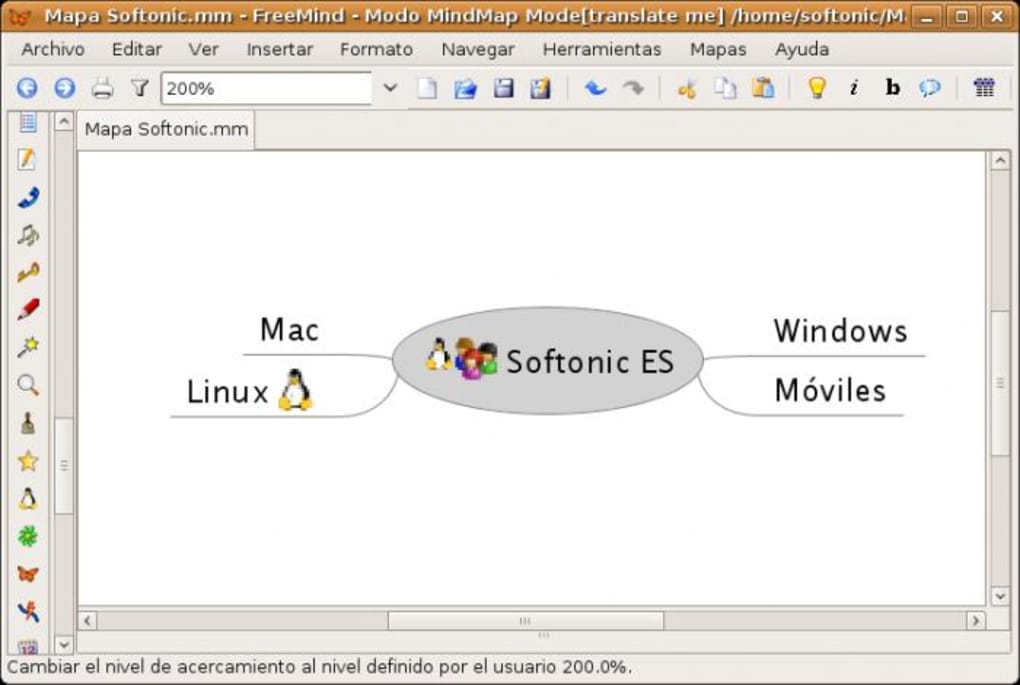

MAC FREEMIND SOFTWARE
FreeMindįreeplane can be integrated with the Docear Academic Literature suite, which is also an open-source software used to manage information. The integrations in this section are those that I was able to find, but you can find or make more. Supported Languages FreeMindīeing open-source programs, I would like to believe that there are a variety of modified integrations for the two tools. Security: With Freeplane, you can protect the whole map or a single node with DES encryption.
MAC FREEMIND WINDOWS
Task calendar & reminders: Found on the ‘properties’ panel, you can find the ‘Calendar and Attributes’ tab, which is used for setting tasking with calendar and reminders.įull-screen mode: This mode gets rid of the clutter: the title bar, tabs, and Windows taskbar. In addition, there’s a scroll bar on the bottom that you can use to move sideways.Īdding external files: You can insert pictures, add hyperlinks to files on the web, or hyperlinks to local files, among other options. Freeplane’s Search facility can find search terms in a text even if there is no exact match. You can also search for texts on the map, scroll, and drag the map around. Navigation: Freeplane lets you change fold branches, roll-up details, and hide extensions. Styling and Aesthetics: Freeplane has formatting features for styling nodes (shape, border type, et cetera) based on the hierarchical level of the node and other factors.
MAC FREEMIND FREE
You can also connect nodes using dynamic links, free lines, and labels. Ordering, grouping, and data classification: Freeplane lets you classify nodes with metadata and style types, i.e., system styles, user-defined styles, and level styles order ideas/nodes by creating a hierarchy and group nodes using ‘clouds’ and summary nodes.

To add notes, you right-click the node and add or edit the notes. To edit a node, all you do is double-click it. Note-taking: Like any other mind mapping software tool, Freeplane helps you take notes. Icons: FreeMind lets you decorate your topics and subtopics using a variety of built-in icons, colors, and different fonts.įile mode: A feature that enables users to access your computer’s files while viewing the folder structure as a mind map.

When the tool finds things related to your search, the map is unfolded only for the current item. Searching: FreeMind’s ‘find’ tool helps you search for items on your map and check the results by one. Plain text and RTF can be copied and pasted from word processors, i.e., Wordpad and MS Word.Įxporting: you can save the map as a PDF, PNG, SVG, HTML, branch as HTML, and other file formats. Likewise, you can follow links with a single click and move the map by dragging it with your mouse.Ĭopying and pasting: Smart copying and pasting into FreeMind-which includes the pasting of links from HTML. You can fold and unfold the map’s branches with one click. Navigation: Navigating your mind maps is one-click easy. With this feature, you can add hyperlinks, graphical links, images, or save your maps to the cloud. Linking and adding external: Mind has the ‘insert’ feature for linking to external files and information. FreeMind comes with a lot of text input options including a small window/tab for writing and editing notes.

Note-taking: Forget the embellishments, every mind map has to have note-taking features. However, depending on your preferences or needs, you might like one tool’s features more than the other’s.


 0 kommentar(er)
0 kommentar(er)
